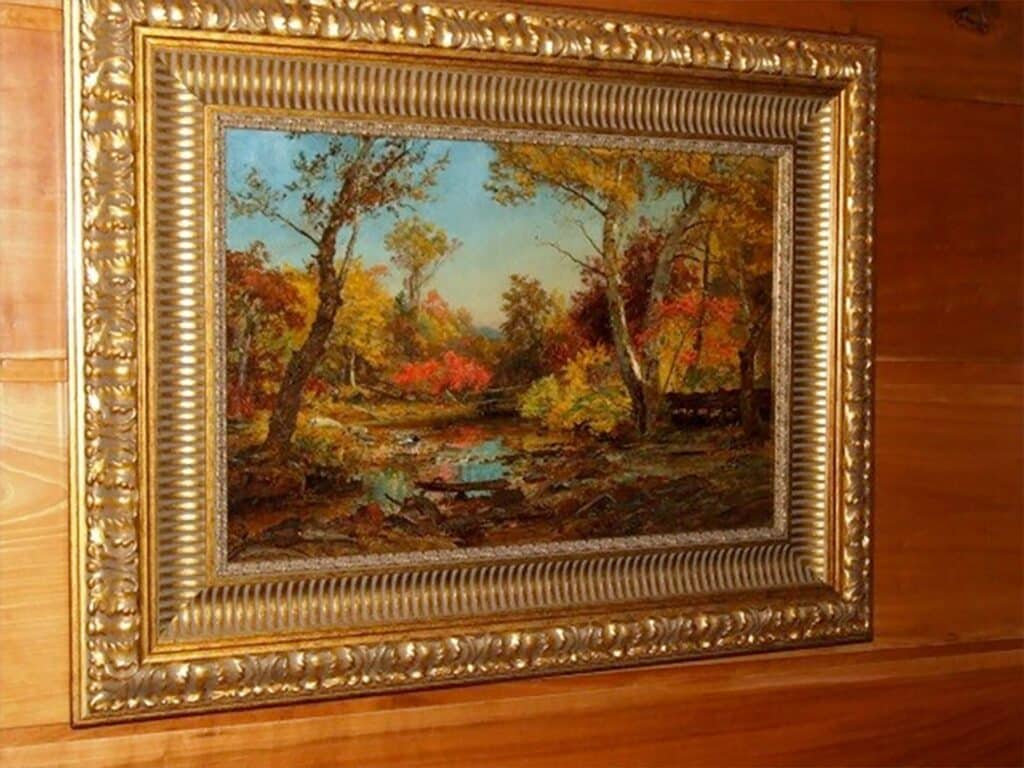Gilt framed and double matted oil on canvas entitled Wawayanda River in Warwick signed and dated lower right by the artist Jasper Francis Cropsey (American, 1823 – 1900) 1884 20×30
Replacement Value: $475,000
Jasper Cropsey was a mid-nineteenth century painter and architect known for his detailed, romantic autumn landscapes. A member of the Hudson River School, he reached his artistic peak in 1860 with a nine-foot-long canvas of a New York autumn landscape. Its brilliant colors stunned many of the English viewers to whom it was presented in London.
Cropsey was born on Staten Island, New York, in 1823. He was trained in mechanical drafting and apprenticed at the age of 15 under architect Joseph Trench. He developed a strong interest in painting and took lessons in watercolors.
In 1841, he began doing landscapes in oil, painting scenes of the White Mountains, the Catskill Mountains, and areas around Greenwood Lake in New Jersey. In 1942, he left Trench’s office to devote himself to painting, although he continued to work as an architect.
Cropsey went to Europe in 1847, and in 1856 went to England where he stayed for seven years. While there, he painted one of his greatest works, Autumn- On the Hudson River (1860, National Gallery of Art), which received critical raves and rated Cropsey an audience with Queen Victoria.
From then on, Cropsey specialized in fall scenes, earning the nickname “America’s painter of Autumn.” In the later years of his life, Cropsey settled on the Hudson River at Hastings, New York, painting oil and watercolor views of his favored river.
He continued some architectural work throughout his life; among his designs was the Victorian-style Sixth Avenue elevated station in New York City.
Jasper Cropsey died in 1900. His work is in numerous public collections, including those of Harvard University; the Metropolitan Museum of Art; the National Gallery of Art; and the New York Historical Society.








